 |
|
Falcon Heavy Demonstration Mission 6 February 2018 |
Space Launch Complex 39A Kennedy Space Center |
Page One of Three |
|
SpaceX launched the Falcon Heavy rocket on its maiden flight from Launch Complex 39A at Kennedy Space Center at 3:45 p.m. on 6 February 2018. The rocket’s two side boosters made successful landings at Cape Canaveral Air Force Station’s Landing Zone 1. The center booster crashed into the ocean during an unsuccessful attempt to land on the “Of Course I Still Love You” droneship. The Tesla Roadster launched into space aboard the Falcon Heavy had a last minute passenger added, a mannequin wearing a SpaceX spacesuit. The attempt to put the Roadster into an Earth-Mars elliptical orbit around the Sun overshot its mark and the Roadster will now travel in a longer orbit carrying it out past Mars toward the asteroid belt. From the SpaceX press release: When Falcon Heavy lifts off, it will be the most powerful operational rocket in the world by a factor of two, with the ability to lift more than twice the payload of the next vehicle, at one-third the cost. Only the Saturn V moon rocket, last flown in 1973, delivered more payload to orbit. Three cores make up the first stage of Falcon Heavy. The side cores, or boosters, are connected to the center core at its base and at the vehicle’s interstage. With a total of 27 Merlin engines, Falcon Heavy’s three cores are capable of generating more than 5 million pounds of thrust. For this test flight, Falcon Heavy’s two side cores are both flight-proven. One launched the Thaicom 8 satellite in May 2016 and the other supported the CRS-9 mission in July 2016. SpaceX will attempt to land all three of Falcon Heavy’s first stage cores during this test. Following booster separation, Falcon Heavy’s two side cores will attempt to land at SpaceX’s Landing Zones 1 and 2 (LZ-1 and LZ-2) at Cape Canaveral Air Force Station, Florida. Falcon Heavy’s center core will attempt to land on the “Of Course I Still Love You” droneship, which will be stationed in the Atlantic Ocean. The payload for Falcon Heavy’s demonstration mission is SpaceX CEO and Lead Designer Elon Musk’s midnight-cherry Tesla Roadster. Demonstration missions like this one typically carry steel or concrete blocks as mass simulators, but SpaceX decided it would be more worthwhile to launch something fun and without irreplaceable sentimental value: a red Roadster for the red planet. Following launch, Falcon Heavy’s second stage will attempt to place the Roadster into a precessing Earth-Mars elliptical orbit around the sun. |
|
| 18 January 2018 - Images of the Falcon Heavy on the pad at night illuminated by spotlights. | |
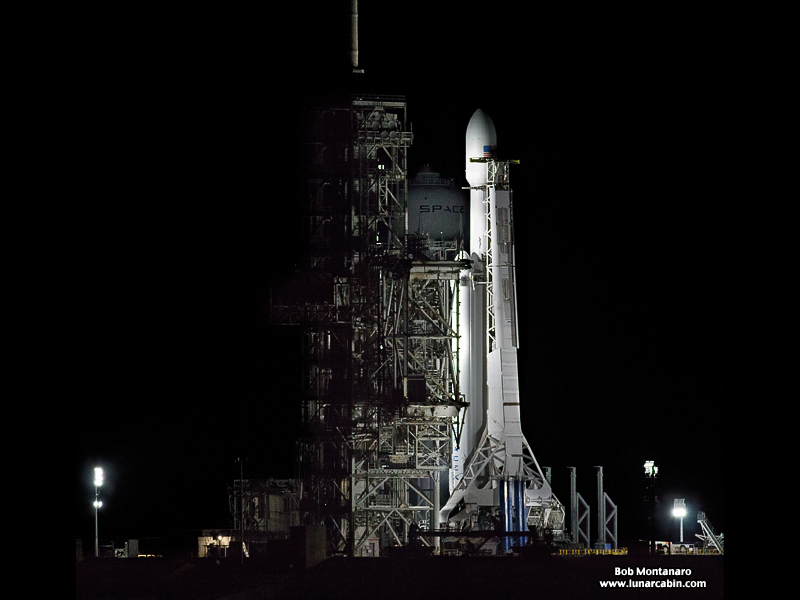 |
|
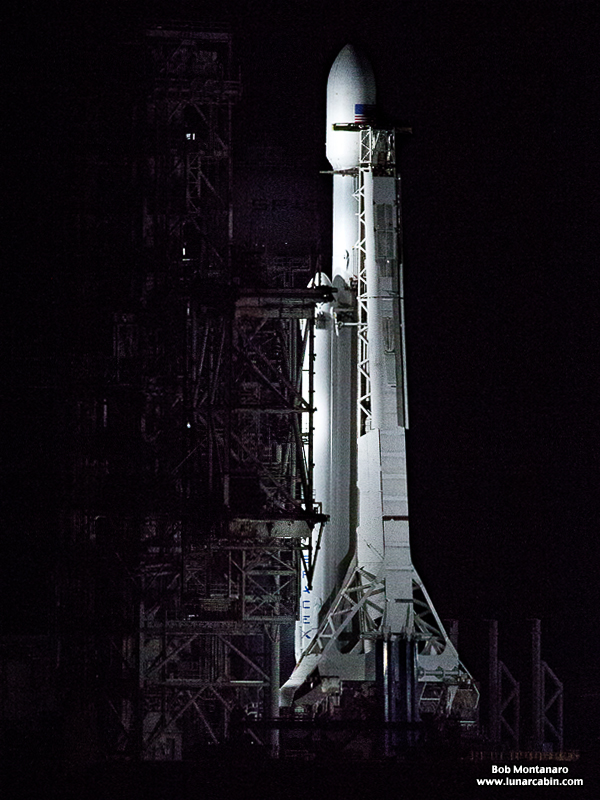 |
|
| 6 February 2018 - Launch Day | |
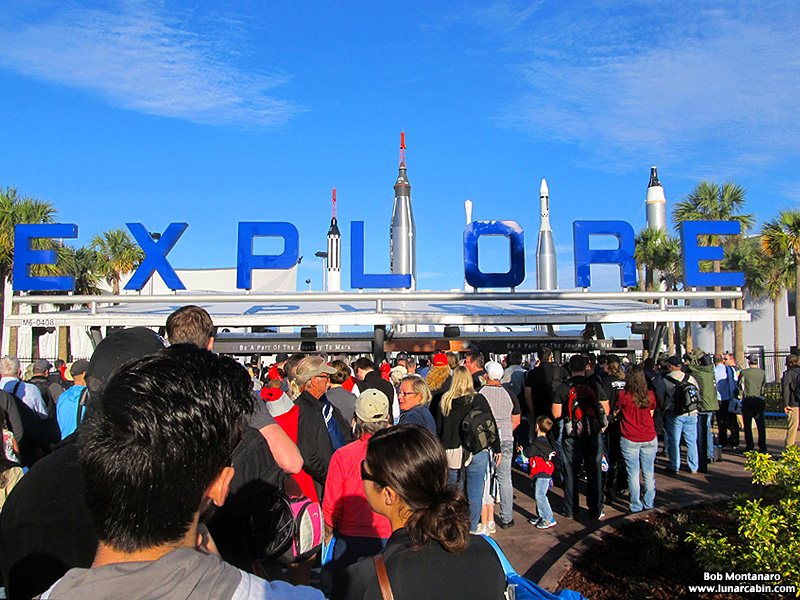 |
|
| The guests for the Falcon Heavy launch line up to wait their turn to go through the security checkpoint at the Kennedy Space Center Visitor Complex (KSCVC). Excitement was in the air all day. | |
 |
|
| A NASA helicopter seen between the Mercury-Redstone rocket and the Mercury-Atlas rocket in the Rocket Garden at KSCVC. The helicopter circled the Complex a couple of times. | |
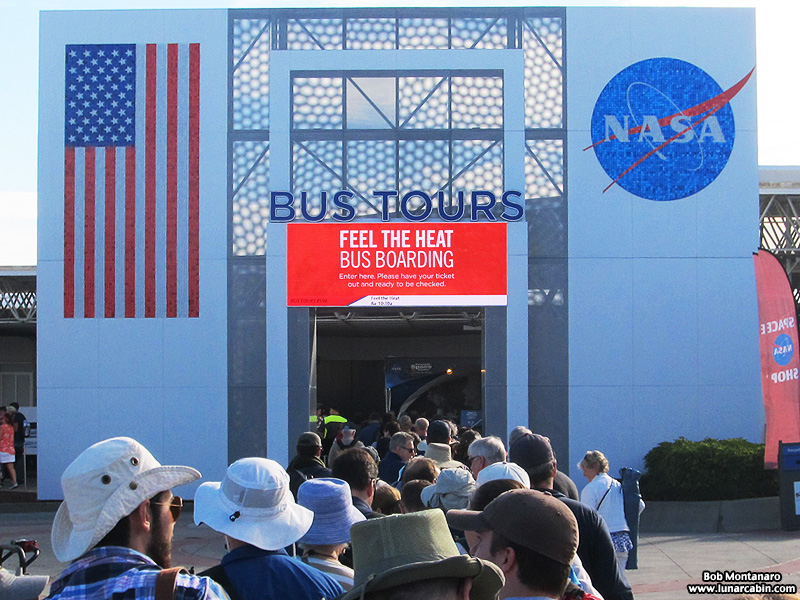 |
|
Yet another line. This one to board the bus to the Banana Creek Viewing Area at the Saturn V Center. Patience was the order of the day. |
|
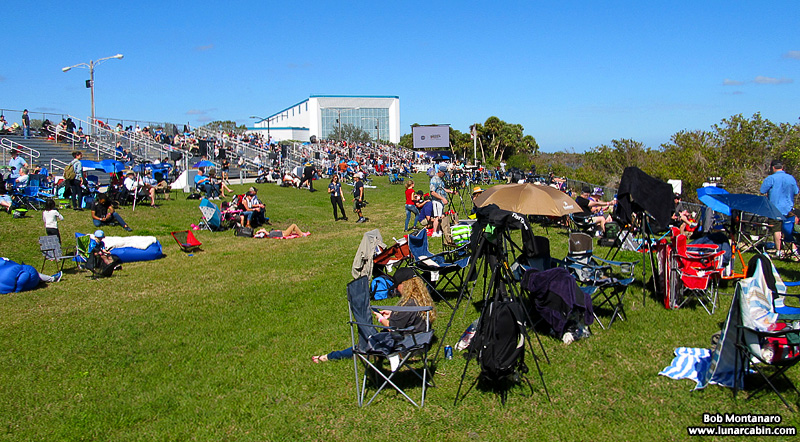 |
|
| The guests relax during the wait until launch at the Banana Creek Viewing Area. The Saturn V Center building can be seen in the background. | |
 |
|
Bill Nye the Science Guy and CEO of The Planetary Society advocated for space exploration during a talk prior to launch. |
|
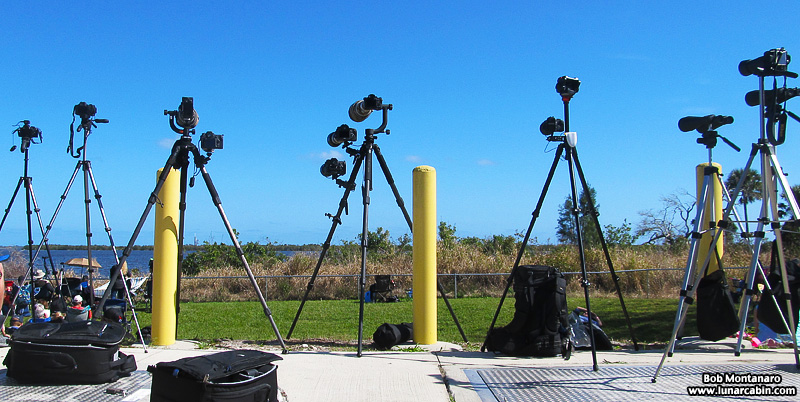 |
|
| Some serious photo equipment on display to capture the launch. Note the tripod in the center is rigged with three and, ultimately, four cameras at launch time. My tripod, sans camera on the tilted tripod head, was a two camera setup with the attached camera already mounted shooting wide angle shots. The camera with the telephoto lens has yet to be taken out of its case. | |
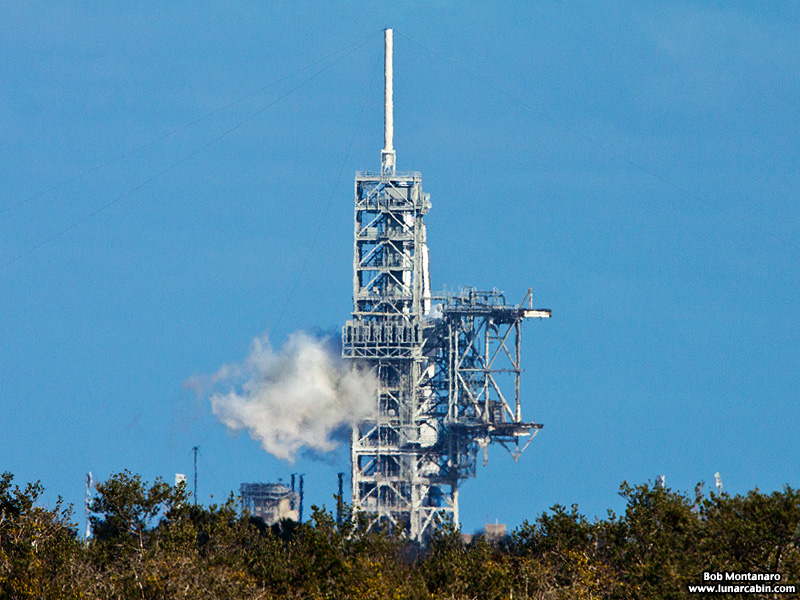 |
|
| High level winds delayed the original 1:30 p.m. launch time. The count was put on hold until later in the window when it was hoped the winds would subside. The sight of gaseous oxygen venting from the tower was a good sign because it meant the weather was cooperating and the rocket was being fueled. | |
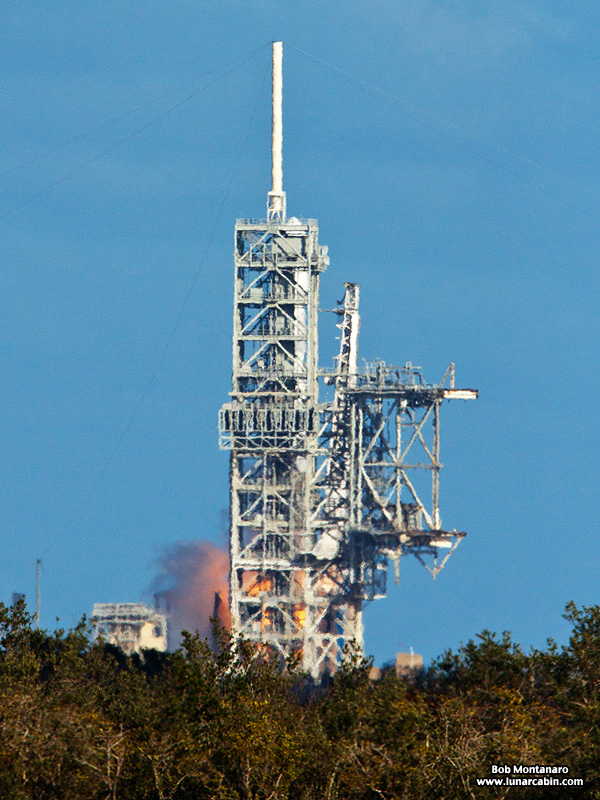 |
|
Liftoff occurred at 3:45 only minutes before the close of the window at 4:00 p.m., which would have meant a scrub for the day. |
|
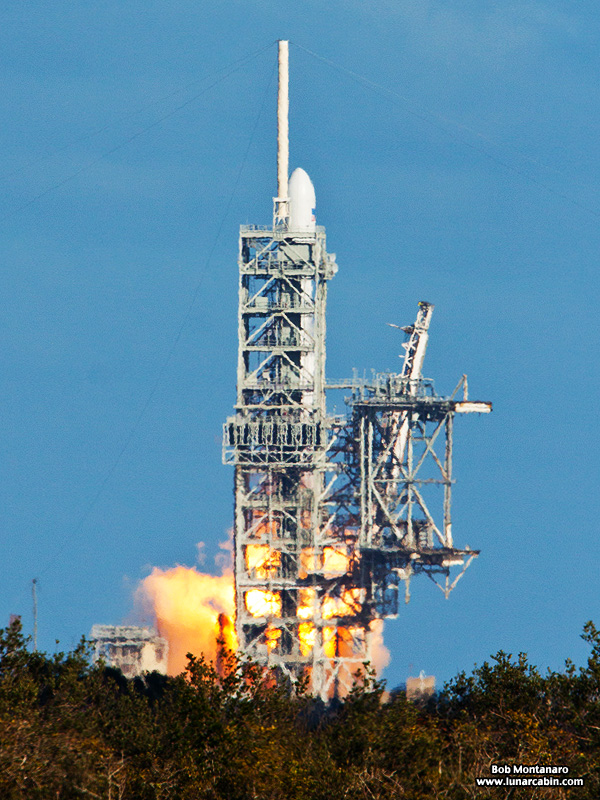 |
|
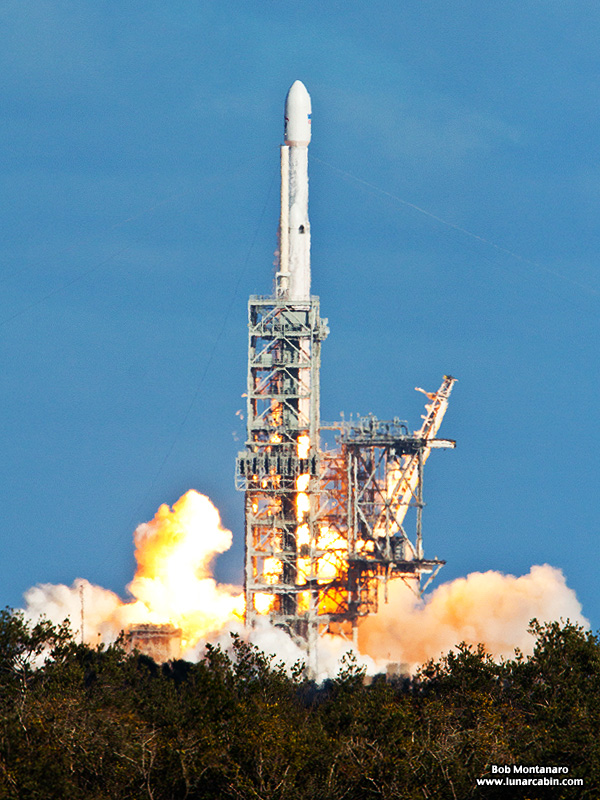 |
|
 |
|
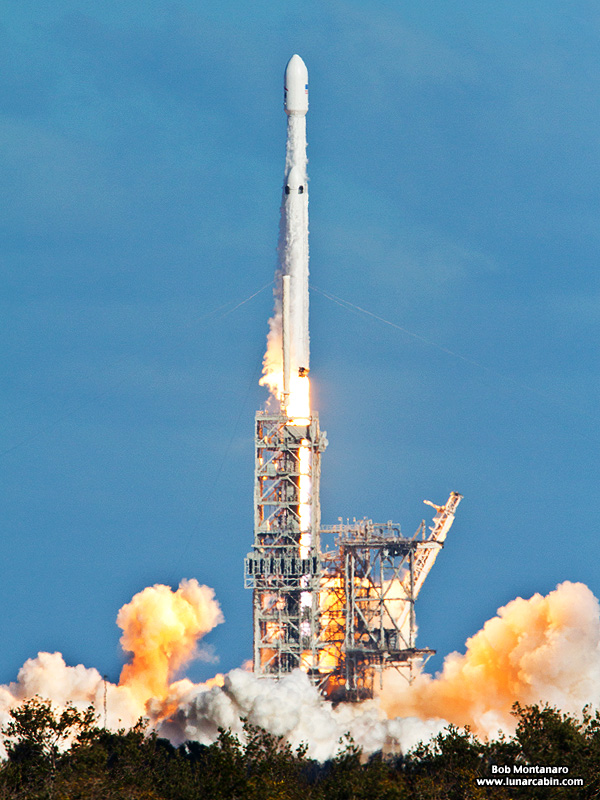 |
|
 |
|
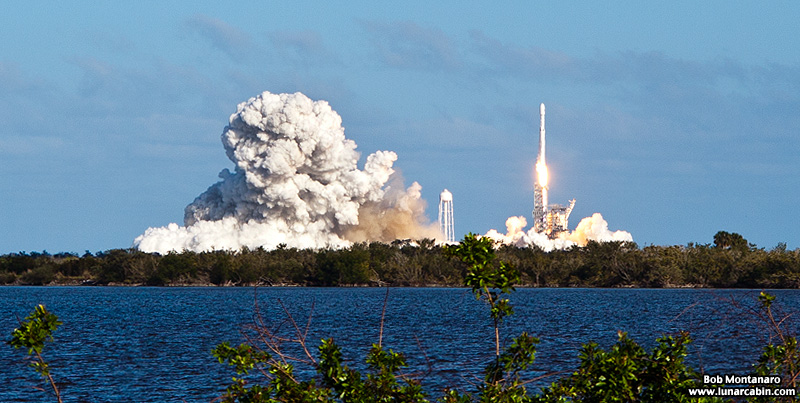 |
|
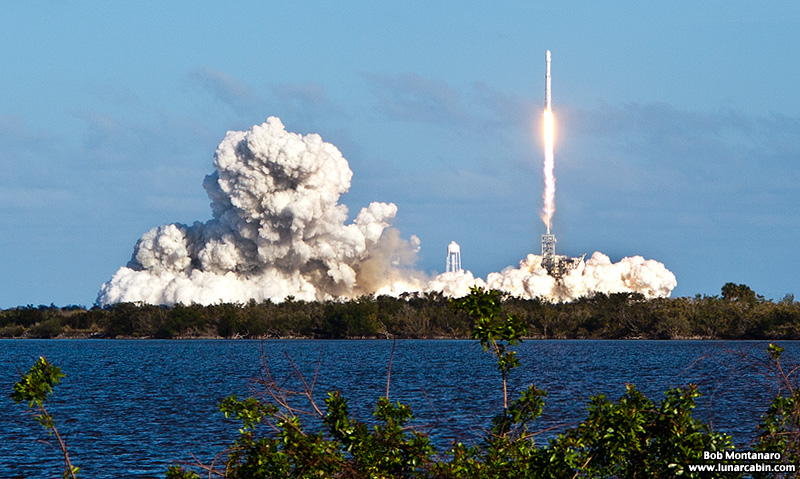 |
|
Go to Page Two of Three for the rest of the launch photos > > > |
|
All contents copyright Lunar Cabin |
|